Kodiak Daily Mirror – Joanne Snoderly
Alaska Aerospace Corp. is considering a second launch facility capable of equatorial launches.
At a Dec. 1, 2016, meeting, the state-owned corporation’s board of directors approved spending up to $250,000 “to enter into contracts … for the preliminary survey, property appraisal, initial site design, site engineering and permitting processes” for the launch site. AAC CEO Craig Campbell estimated he has so far spent $30,000 to $35,000 of those funds on preliminary surveys.
The company currently operates the Pacific Spaceport Complex Alaska at Narrow Cape on Kodiak Island. The Kodiak launch facility is capable of polar, sun-synchronous and high-inclination orbits, but cannot support the equatorial launches that make up most of the industry demand.
Exploring the possibility of an equatorial launch site is an attempt to “capture 100 percent of the market” for launches, Campbell said.
Customers with a need for both polar and equatorial launches would be able to sign one contract and work with one company to meet all their demands, giving AAC “a tremendous competitive advantage over anybody else, because there’s no other launch site that can do both equatorial and polar in the United States of America,” he said.
The company has researched several sites and believes Hawaii or Saipan could meet its needs, according to Campbell.
Although the sites are not within Alaska, Alaskans will still benefit from the added revenue stream, he said.
“We’re headquartered in Alaska, we employ Alaskans. We’re trying to get more business for Kodiak, so if we can offer the full range of equatorial and polar, that gets more customers to come to us for polar operations out of Alaska,” Campbell said. “That gives us a greater opportunity to have more business at the PSCA, which is the goal and objective of why we’re doing this.”
AAC has failed to turn a profit since its inception in 1991, and has therefore been subject to intense scrutiny from the public and some state legislators. The state ceased all funding to the corporation in late 2014.
Campbell has attributed the company’s failure to make a profit to past reliance solely on government contracts.
According to an Alaska Department of Military and Veterans Affairs department overview dated Jan. 19, the company diversified its customer base with commercial contracts with Rocket Lab USA and Vector Space Services, in addition to a contract with the Missile Defense Agency.
The company’s end of the year net position was $76.3 million, a $4.9 million increase over 2015, the overview states.
“The money we’re spending on this is from revenues we generate from business and we do not have any requests in front of the (Alaska) Legislature right now for sustainment funding,” Campbell said.
Although state legislators have called for AAC to return state investments in the company, Campbell said he first needs flexibility to turn a profit.
“Under the old way, it wasn’t going to work. So we have to do it differently,” he said. “If we don’t do it differently, you’re not going to get different results.”

